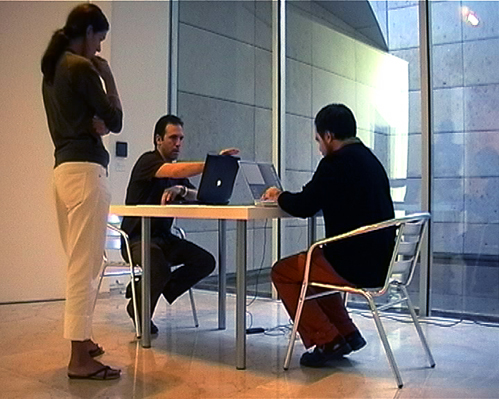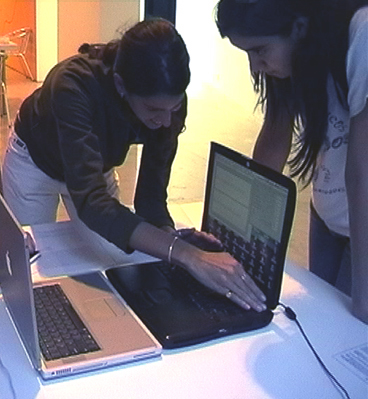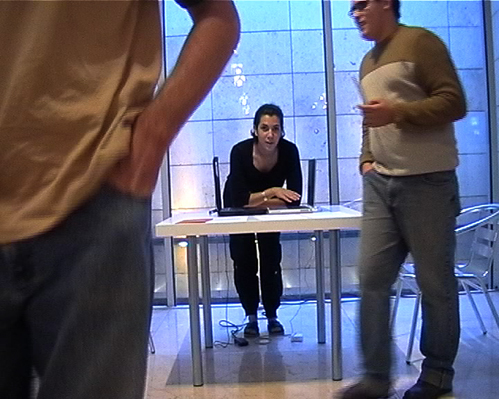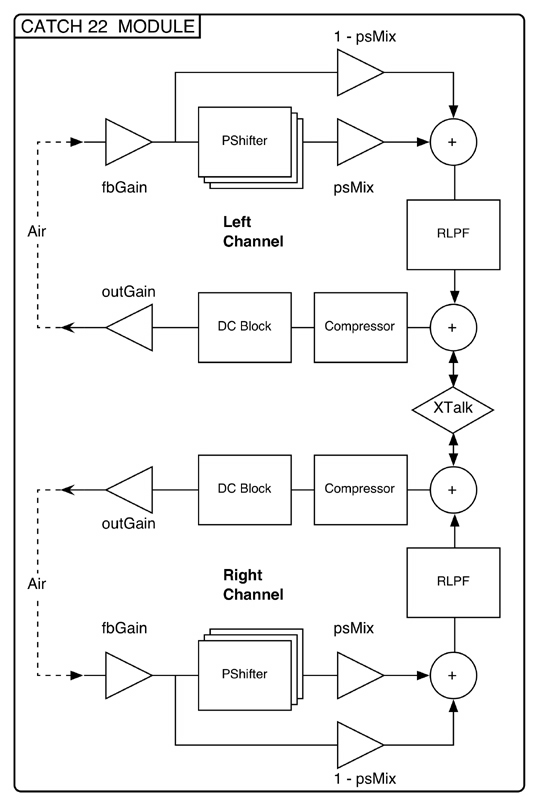Catch 22 degree zero (2004) |
|
for two laptops |
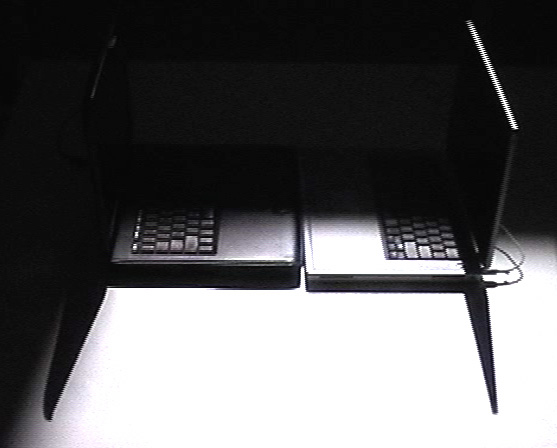 |
| "Catch 22 degree zero" opens a series of pieces done in collaboration with composer Nicolas Varchausky exploring the use of feedback and recursion. In its first version (its "degree zero", paraphrasing Roland Barthes), Catch 22 consisted of a performance/installation piece using two laptops. The machines were set to have their built-in microphone and speakers feedback, using software to control the loudness of the process and to transform its sound. |
| Details | |||||
| Exhibited |
Museo de Arte Latinoamericano de Buenos Aires (MALBA), April 1st, 2005. |
||||
Description |
"Catch 22 degree zero" was done in collaboration with composer Nicolas Varchausky. The piece consisted of two laptop computers set to have their built-in microphone and speakers feedback using software to control the loudness of the process and to transform its sound. One of the premises of the project was to start from "zero", using no sound recordings, completely building a new sonic palette from the feedback process itself. The computers were set on a table at the end of one of the rooms of the museum; facing each other, they generated both local and inter-modulated feedback. Performances were scheduled throughout a whole day, spaced roughly every hour and a half and running for about half an hour. During the performances -which emulated some sort of chess game- we played using both the software GUI (with about 20 control parameters) and our hands (to interact with the microphone and the speakers, forcing feedback to stop or to make it even more extreme). Paraphrasing Roland Barthes' concept of "degree zero", this first version of Catch 22 served the purpose of experimenting and staking new sonic territory, exploring a possible new vector of artistic research centered on the use of feedback and recursion that was extended in later pieces. |
||||
Technology |
The system developed for "Catch 22 degree zero" was the kernel for the ones used in later projects ("Catch 22 goes underground" and "Catch 22 goes online"). It was built with modularity in mind, making it easy to extend or duplicate its modules. The core module of the system consisted of three pitch shifters running in parallel then filtered by a resonant low pass filter, the output of the filter was sent both to another module (via a crosstalk channel) and to a compressor that limited the feedback level. The output stage consisted of a DC blocking filter and a gain control unit (see the Documentation section below for a complete block diagram). Each component of the Catch 22 module could be controlled with multiple parameters using a GUI, also each of those parameters could be set to use a frequency- and range-adjustable stochastic controller to vary their values randomly over time. Each laptop run two modules in parallel, one per stereo channel, with over 20 control parameters. |
||||
Credits |
Santiago García Navarro, Teresa Riccardi, Laura Guzik, MALBA, Center for Digital Arts and Experimental Media (DXARTS), University of Washington, Project Art In Situ (P.A.I.S.), Universidad Nacional de Quilmes. |
||||
| Documentation | |||||
Photos |
| ||||
Left to Right (click to enlarge images): [1] Performance (Juan Pampin, white laptop, Nicolas Varchausky, black laptop) [2] [3] Visitors interacting with the system [4] Block diagram of Catch 22 module. |
|||||
Video |
Traveling shot entering the museum (by Laura Guzik)
Excerpt from the end of a performance (by Laura Guzik) |
||||
Audio |
Recording of one of the performances |
||||
© 2007-2010 Juan Pampin, All Rights Reserved. |
|||||
